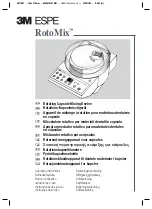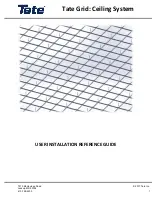
14
Figure 10
Nasco
Life
/
form
®
Injectable
Training Arm
About the Simulator…
The
Life
/
form
®
Injectable Training Arm
Simulator duplicates the human con-
dition as closely as modern plastics
technology allows — it is almost the
real thing.
(See figure 10.)
Its care
and treatment should be the same
as with a patient; abuse or rough
handling will damage the simulator
— just as it would cause pain to a
patient.
Although this arm will provide years
of trouble-free usage, the skin and
veins can be readily replaced when
needed. The outer skin is easily
peeled off revealing the “core” and
veins, providing, literally, a brand new
arm. The life of the replaceable skin
and veins will be prolonged by utiliz-
ing smaller needle sizes (such as 20-
to 25-gauge). However, if instruction
with larger needle sizes is required,
this can be done; the skin and veins
will merely need to be replaced
sooner. The Skin and Vein Kits are
available through Nasco (see page 9
for list of supplies).
Internal Structure:
Internally, the vascular structure (rub-
ber tubing) begins at the shoulder and
continues under the arm, crosses the
antecubital fossa forearm, makes a
loop in the back of the hand, and then
returns to the underarm. This venous
system is constructed of special plastic
Figure 11
tubing with the lumen being the
approximate size of a human vein.
(See figure 11.)
This vascular struc-
ture has an inlet tubing and an outlet
tubing at the shoulder. It is via these
tubes that synthetic blood is injected
and removed, thus allowing practice
in the techniques of blood drawing
and starting intravenous infusions.
Set-Up:
A. Preparing the Synthetic Blood
1. Fill the pint bottle containing syn-
thetic blood concentrate with dis-
tilled water.
(See figure 12.
)
2. Pour the synthetic blood into one
of the bags.
(See figure 13.)
Figure 12
Pinch
Clamp
Outlet Tubing
Inlet Tubing
Pinch
Clamp
12"
Life/form
®
Blood
Venous System
Anterior
Posterior
Needle
Adapter
Posterior
Anterior
Procedure A















































